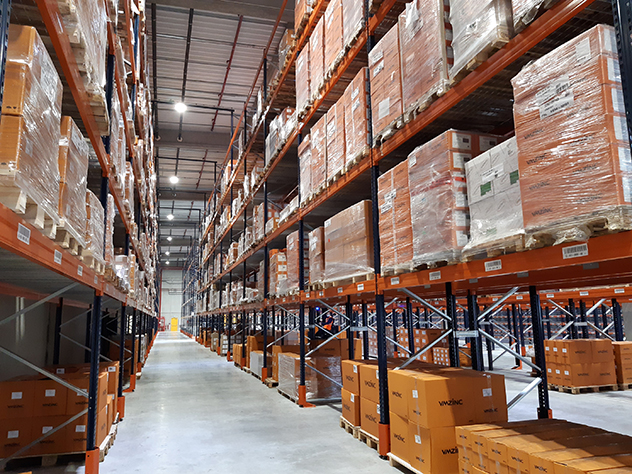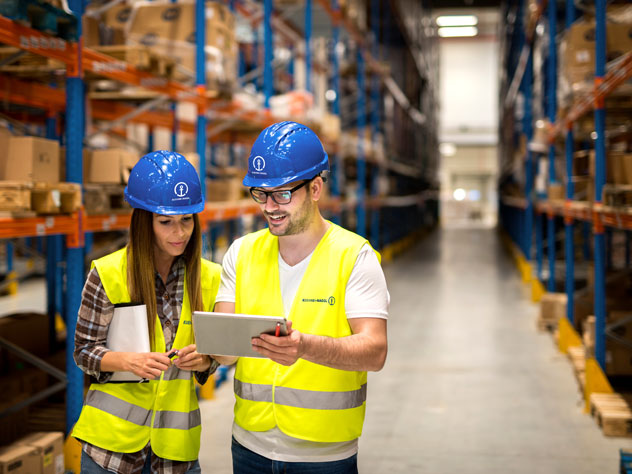The warehouse is no longer confined to stock management—it has become a forward-facing technological hub where integrated software, automated systems and mobile technologies all optimise processes, support growth and exceed customer expectations.
The 7 major advantages of automation
Modern fulfilment centres and warehouses must be agile and ultra-flexible. The automation of logistics is a strategic response to the need for greater efficiency and responsiveness, and for alignment with current market challenges.
- Freedom of arrangement: optimise every square metre by exploiting height and reducing aisle width.
- Efficiency redefined: boost the productivity of your logistics to deliver an efficient, profitable and uninterrupted experience.
- Express delivery: respond quickly to market demand by speeding up flows and reducing delivery times.
- Operational security: opt for "just in time" with reliable orders and bulletproof stock management.
- Simplified handling: reduce heavy work thanks to easy product handling and more ergonomic operations.
- Focus on the essentials: free operators from repetitive tasks and refocus them on high value-added missions.
- Sustainable commitment: meet Corporate Social Responsibility criteria by improving working conditions and controlling your energy consumption.
Examples of tailor-made logistics optimisation for efficient and sustainable fulfilment centres and warehouses
It is not necessary to automate the entire supply chain. Each company has its own specific needs and must tailor solutions to meet them. Automation is possible at all levels—reception, storage, order preparation, and dispatch. The long-term viability of an automated system depends on its flexibility. Automating logistics means adapting to every kind of client, from start-ups to multinationals.
Different levels of automation

 Receiving
Receiving
- Telescopic conveyors: make it easier and more ergonomic to unload parcels directly from containers and optimise the flow of goods as soon as they arrive in the warehouse.
- 6-axis robots: ensure precise pallet unloading—layer by layer or individually—thanks to an adapted gripping system that adapts to the business’ specific loads.

 Storage, preparation and dispatch
Storage, preparation and dispatch
- Stacker cranes: offer an automated overhead storage solution for pallets and parcels, maximising the use of space with a mast fitted with a lifting platform for optimum accessibility.
- Mini-load/multi shuttles: designed specifically for totes and parcels, these automated stacker cranes provide efficient storage and access to items, optimising stock management. Order picking stations are ergonomically designed, with totes arriving in the correct order, with visual aids indicating the quantity of items and the deposit location. This improves efficiency and accuracy.
- Sorters (e.g. shovels, cross belt, pebbles): organise the sorting and grouping of items by order wave or by reference, with operators depositing consumer sales units (CSUs) in bulk onto trays. The system reads the barcode to select the corresponding drop, optimising the order preparation process and directing them by dispatch zone.
- Robot sorters: organise the sorting and grouping of items by order wave or by reference using highly agile two-axis mobile robots. They offer very high flexibility while limiting capital expenditure.

 Material handling
Material handling
- Conveyors: single or double load transfer systems, moving parcels or pallets to the desired location, offering an automated solution to improve the speed and efficiency of the logistics flow.
- AGV/AMR (Automated Guided Vehicles/Autonomous Mobile Robots): autonomous robots specially designed to transport loads, pallets or parcels from point A to point B without leaving a physical footprint, enhancing the efficiency of movement within the warehouse.
Automation—a catalyst for success
Companies that have implemented automation solutions have seen a significant reduction in operational costs and an increase in productivity:
- 15-30% reduction in logistics costs per order over a period of three to five years
- Production capacity increased by a factor of two to three
- 25% reduction in transport costs thanks to precise packaging management
- Five-fold increase in the number of parcels processed per minute
The automation of logistics, when implemented flexibly and with the end customer in mind, enables companies to control their costs and absorb higher volumes, while increasing the level of personalisation.
In a world where customer experience and sustainability are increasingly valued, logistics automation is central to success across all sectors. Thanks to easily adaptable solutions, it can be flexibly integrated into a company's ecosystem. Automation is not just a technological innovation, but also a catalyst for success.
Do you have any questions about your project? Want to find out more about fulfilment and warehouse automation? Talk to our contract logistics specialists.









